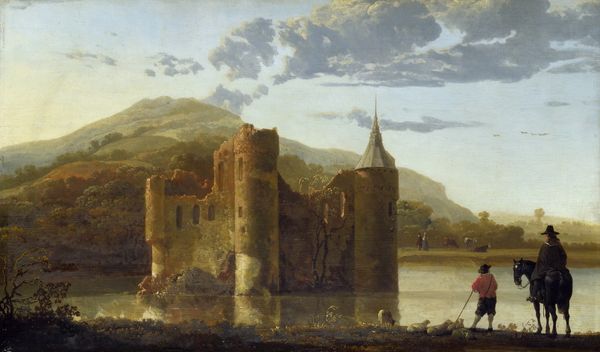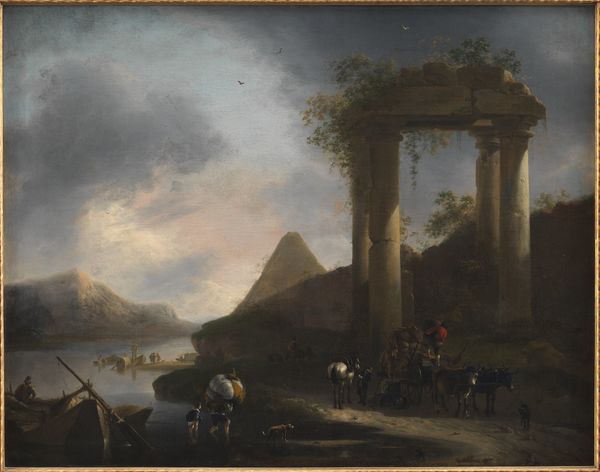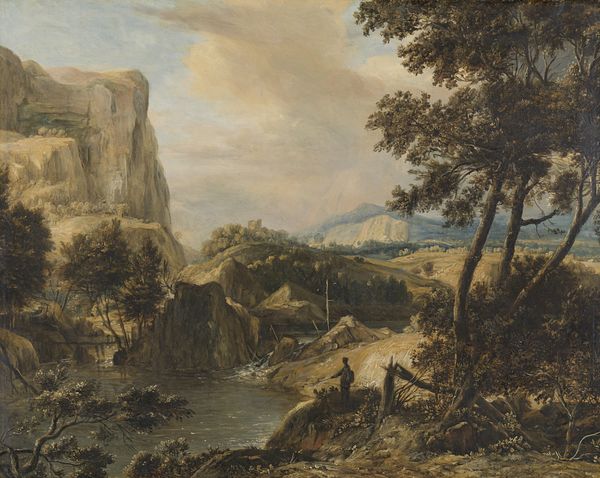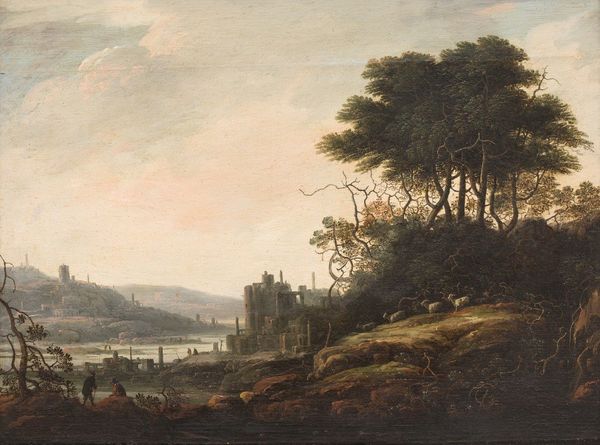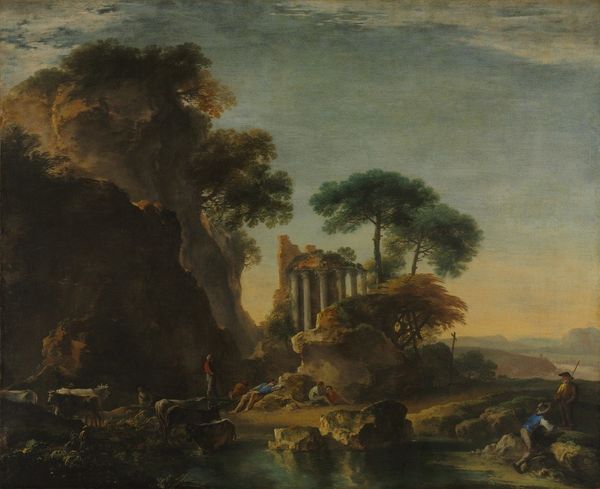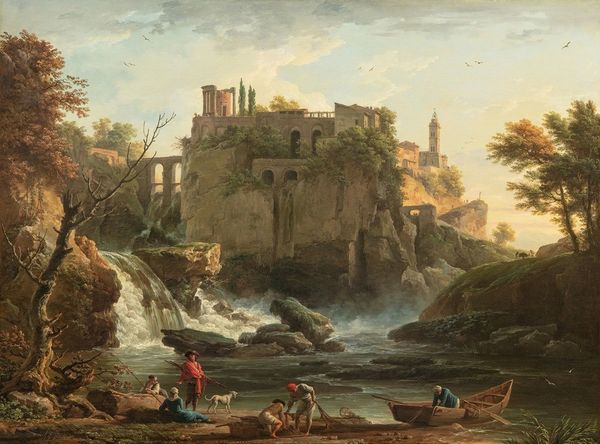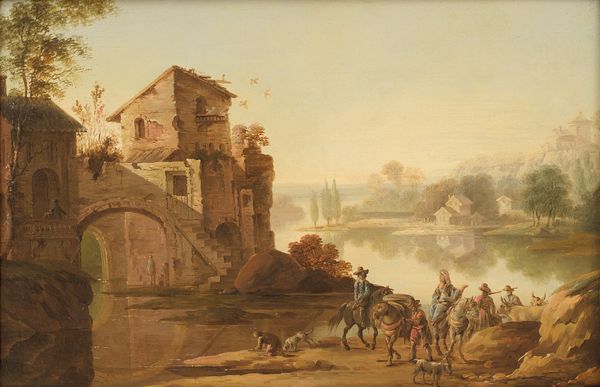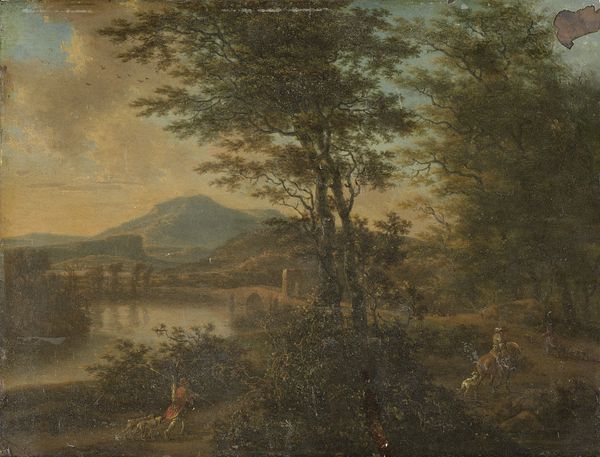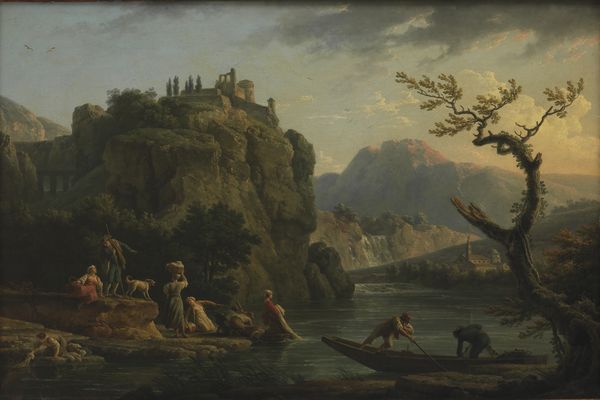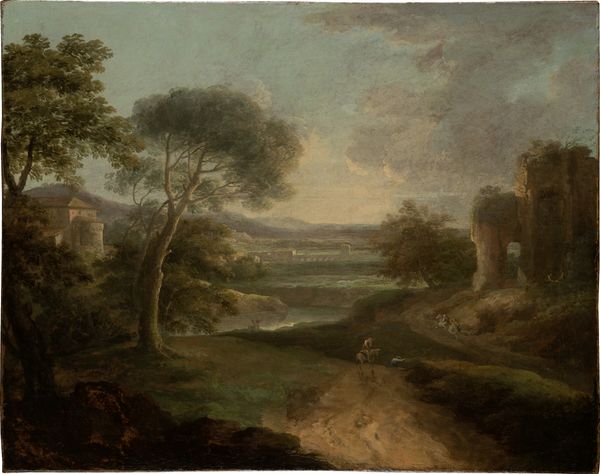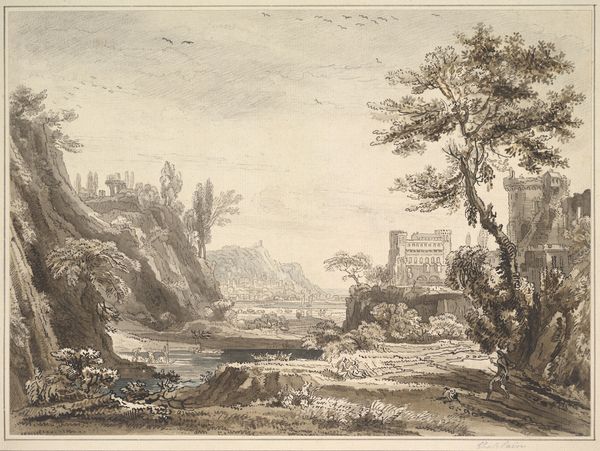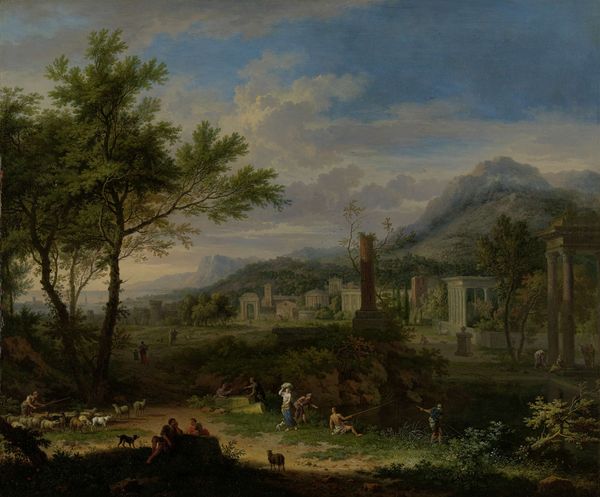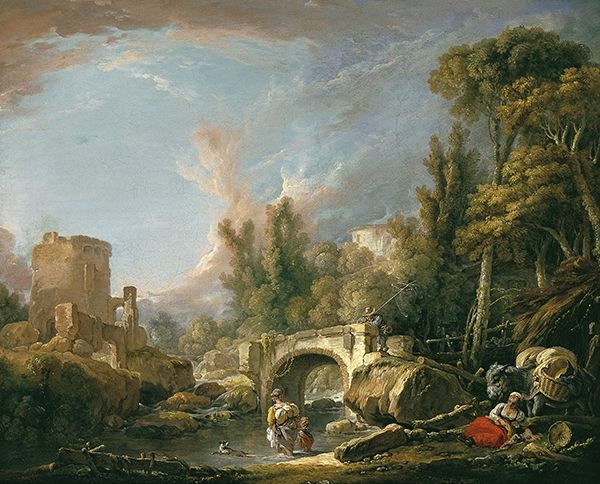
painting, oil-paint
#
baroque
#
painting
#
oil-paint
#
landscape
#
river
#
charcoal drawing
#
oil painting
#
genre-painting
Dimensions: height 41.7 cm, width 56 cm, depth 4.5 cm
Copyright: Rijks Museum: Open Domain
Curator: Dirck Verhaert's "River Landscape," likely painted sometime between 1630 and 1675, offers us a glimpse into a past era. What's your immediate take? Editor: A kind of serene melancholy. The crumbling architecture suggests time's relentless march. But the figures in the boats and along the riverbank bring a feeling of humanity enduring. Curator: Absolutely. Verhaert’s brushstrokes detail how the materials of architecture age and are slowly reclaimed by the organic world. Observe the specific types of stone and the vegetation reclaiming its surfaces – what might this signify in terms of labor, of architectural techniques from the era, of perhaps even trade of certain materials in this river context? Editor: Yes, the stone. It is a compelling detail. More powerfully, these ruins trigger a deep-seated connection to historical narratives and lost civilizations. It serves as a reminder of human ambition, and of nature reclaiming the space of civilization. Curator: Interesting that you use the word “space,” I’d propose considering this landscape as an explicit space of material transaction and transfer; not just goods coming down river, but the flow of labour, or even capital represented here as durable, ageing architecture. Editor: I understand that you may approach such an image considering those processes, yet this crumbling tower still operates symbolically as a reminder of transience – the very fact that wealth and power do erode like those stones. Curator: But consider that this particular style—the Baroque landscape—often served the aspirations of the wealthy, designed to be placed on their walls. How did their ownership affect the reception of a painting showing similar-looking decaying buildings? Editor: A patron commissioning such a piece perhaps seeks a certain validation, a meditation on the fleeting nature of earthly glory, but also perhaps a subtle endorsement of their place in that historical continuum. There is a sort of picturesque aestheticizing of decline. Curator: Precisely. And understanding the specific materials employed - oil paints, likely pigments sourced through global trade networks - all contributes to a deeper reading of the artwork as a material object embedded in social and economic systems. Editor: It's true that by analyzing these symbols in tandem with an understanding of the painting’s construction, its creation begins to resonate as a wider cultural artefact. I do feel the weight of these many potential levels of meaning and how that is amplified through symbolic devices. Curator: Well, I’m content knowing we’ve pulled away a few more layers in its history and its physical being. Editor: Indeed, a deeper viewing can truly alter the image we think we know so well.
Comments
No comments
Be the first to comment and join the conversation on the ultimate creative platform.
